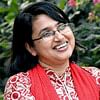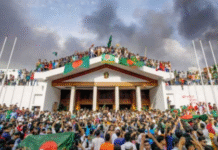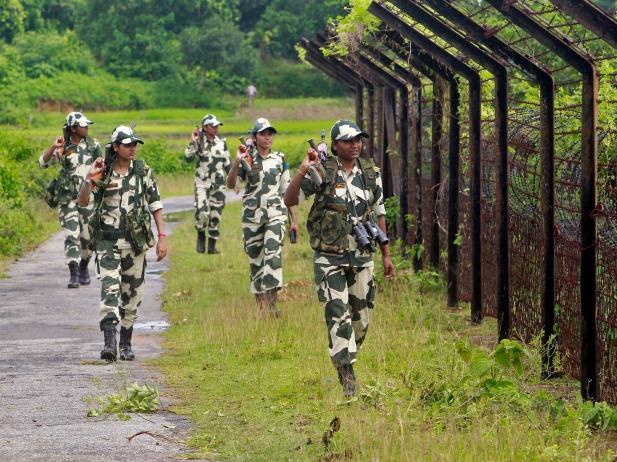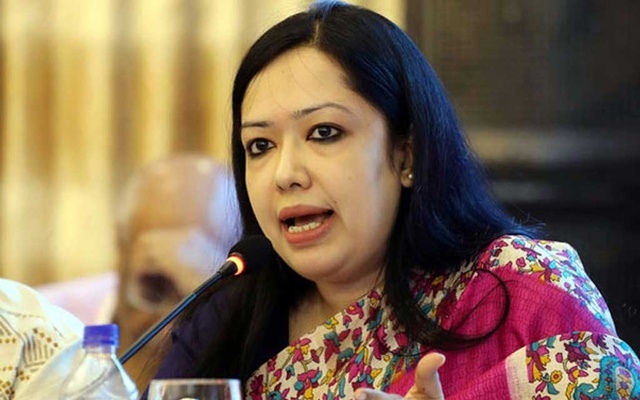
Last update on: Sat Feb 22, 2025 08:00 AM

In Bangladesh, visually challenged people have little access to the rich world of literature, an exclusion that limits their ability to experience the joy of storytelling. To counter this, Sparsha Braille Foundation has taken an admirable step: they are publishing books in Braille to break this barrier. This initiative, which has seen the publication of around 150 Braille books already, is indeed commendable. But the question remains: why are more publishers not stepping up like this? Why should the visually challenged readers—termed “sight winners” by Sparsha—be deprived of the magical world of literature? How long will it take for us to understand that they should be able to read books beyond textbooks?
Nazia Jabeen, Sparsha’s chief entrepreneur, has been championing the cause for 16 years. “Every book should be published in print, Braille, and audio,” she insists. Yet, despite this plea, the country’s publishing industry has so far been largely non-responsive. Publishers must recognise their responsibility to reach all readers. Thousands of books are published every year. If each publisher publishes at least one book in Braille, then visually challenged people will be able to enjoy more literature.
Exclusion of people with disabilities from literature, entertainment, and sports is still concerning in Bangladesh, reflecting that we are still not thoughtful enough about enhancing the quality of life of the disadvantaged. This realisation struck me powerfully when I visited the Melbourne International Flower and Garden Show in Australia and encountered a garden named “Through the Keyhole.” This garden, designed by James Dawson, was created for the visually impaired, the shortsighted, and the sighted alike. Every detail encouraged engagement through all senses—fragrant herbs for smell, fountains for sound, fruit and vegetable gardens for taste, and textured structures for touch. So, it was possible for a person with limited vision to celebrate the beauty of the garden to the fullest, as they could experience it through smell, sound, taste, and touch. It was a testament to the fact that if we design society with inclusiveness in mind, remarkable things are possible.
This need for inclusivity extends beyond disability. It also encompasses linguistic diversity. Literature is a vessel for culture, identity, and heritage. Yet in Bangladesh, the literary landscape still remains overwhelmingly dominated by Bangla. According to the book Bangladesher Nanan Bhasha (Different Languages of Bangladesh), by Justice Muhammad Habibur Rahman, at least 37 languages are spoken across the country. He presented the alphabets of various languages, including Kokborok, Khasi, Garo, Chak, Chakma, Tanchangya, Bom, Bishnupriya Manipuri, Marma, Mro, Rakhine, and Santal. There are also poems written in those languages and their Bangla translations. The languages are arranged in alphabetical order in the index, showing the equal importance of all languages. According to the author, “February 21 speaks of all languages—that belief is the motivation and inspiration of this book.”
Languages of Indigenous groups carry centuries of stories, songs, and traditions. How often do we see their literature in print? How many of these works are translated into Bangla, allowing a wider audience to appreciate them? The answer is dishearteningly few.
Sanjeeb Drong, general secretary at the Bangladesh Adivasi Forum, reminds us of the gravity of this crisis, “Language survives in literature. When a language loses its literary presence, it is at the risk of disappearing altogether. Already, 14 languages in Bangladesh are on the brink of extinction.”
Recently, I came across a book featuring Mro fairy tales with Bangla translations. The experience was eye-opening. The simplicity of the storytelling, layered with profound meaning, was a stark reminder of what we stand to lose without efforts to preserve and promote Indigenous literature—we are depriving ourselves of a richer, more diverse literary tradition.
This exclusion is not just a matter of ignorance, but also of systemic neglect. Misconceptions—often unintentional—about Indigenous languages and cultures lead to marginalisation. Literature can serve as a bridge, fostering understanding, empathy, and a shared sense of humanity.
We eagerly consume foreign literature in English or their Bangla translations, yet we show little curiosity about the literature written in our country’s Indigenous languages. Should we not be equally invested in exploring our own linguistic heritage? The role of institutions is crucial here. The cultural affairs ministry, for instance, should push for a greater representation of Indigenous literature. Bangla Academy and the International Mother Language Institute should take the lead in publishing works in Indigenous languages and translating them into Bangla.
Readers can also play a role by demanding and supporting such publications. Universities can play their part as well. While many public universities offer foreign language courses, none of them has dedicated departments for Indigenous languages. This must change if we are to preserve our linguistic heritage.
According to UNESCO, 3,000 languages worldwide are at risk of disappearing by the end of this century. In response, the United Nations declared 2022-2032 as the International Decade of Indigenous Languages, aiming to preserve endangered languages and ensure linguistic rights through global cooperation. If we do not act now, we risk losing parts of our cultural identity forever.
Sparsha’s slogan resonates deeply, “Humans are not blind due to lack of vision; humans are blind because of lack of wisdom.” Will we remain blind to the need for inclusiveness in literature? If we truly believe in a just and equitable society, we must ensure that literature belongs to everyone, regardless of disability or language.
Laila Khondkar is an international development worker.
Views expressed in this article are the author’s own.









